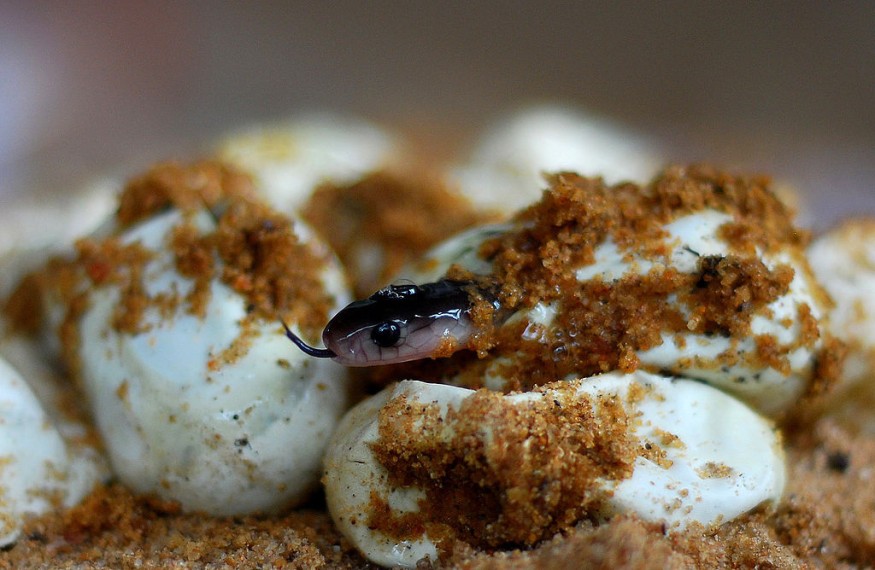A snake's life cycle largely varies by species as some lay eggs, while others give birth to live young ones like mammals that range from one or two newborns up to 100. In rarer cases, there are species of snakes that lay eggs without mating due to a process called parthenogenesis.
But considering that it is still hatching season now, snake rescuers are excited to see the hatchling snakes that hatched from the eggs laid by mother snakes two to three months ago. Although these reptiles might still be little, experts still advise against disturbing their nests to avoid getting bitten.

An Indian cobra hatchling emerges from an egg on the outskirts of Bhubaneswar on June 28, 2013. The Indian cobra is a venomous snake indigenous to South Asia, found across India, Pakistan, Bangladesh and Sri Lanka.
Do Not Disturb Hatchling Snakes
Snake rescuer Nick Evans is excited to see the hatchling snakes this season that mother snakes laid two to three months ago. In a post on Facebook, he said that he is lucky enough to get to watch a few clutches of hatchling snakes or at least see the baby snakes out.
He said that these babies came from heavily pregnant snakes he caught a whole ago and let them lay their eggs before setting them free. Now, it is time for him to set the babies free as well. He assured people that they would not need to worry about the hatchlings' parents because snakes only come together to mate and go their separate ways after.
That means the father is out of the picture, while the mother leaves her eggs behind before they even hatch. Although, some species like pythons and Spotted Skaapstekers stay to care for their eggs. But mostly, both parents are long gone before hatchlings arrive.
Evans urged people to be cautious around these snakes even as babies because venomous snakes are venomous from day one. According to Canyon Lake's local news outlet, the venom in a baby snake is just as potent as the venom in adults. The only difference is that baby snakes might be quicker to bite, and adult snakes can hold more venom.
That is why experts do not recommend picking up or killing hatchling snakes. Also, the presence of both hatched and unhatched snake eggs or the sight of snakes at any stage of life is indicative of a snake problem. It is best to contact professional wildlife control specialists to solve this problem.
ALSO READ: Bizarre Snake Found in Thailand Has Green Boa Fur Instead Of Scales [Look]
Life Cycle of Snakes
Most snakes, like the common green snake and corn snake, are born from eggs and emerge using special teeth to break the leathery membranes of the eggshell. The website Critter Control says that hatchlings, also known as snakelets, feed on small rodents or reptiles for sustenance to survive.
Snakes reach sexual maturity when they reach two to four years old, although it could vary depending on the species and their living conditions. For the ideal conditions, adult snakes can live 20 to 30 years. But the number of years could be limited with the presence of natural predators.
Newborn and juvenile snakes molt as they grow. They do this to shed the old skin they have outgrown and by rubbing their body on rough surfaces. Molted skin snakes in an area indicate the presence of the reptilian pests nearby where they could also be breeding.
When a snake reaches its sexual maturity, it lays as many eggs as possible to increase the chances of its offspring living after birth. Depending on what species, they could lay from 3 to 100 eggs.
Not all snakes lay eggs because some produce young eggs that hatch internally. Rattlesnakes are ovoviviparous snakes because the female carries eggs for three months before they hatch inside the body. So, the mother rattlesnake gives birth to live snakelets.
RELATED ARTICLE : 5-Foot Venomous Snake Found Curled Up Inside A Cabinet Drawer After Extreme Weather Event in Australia [Look]
Check out more news and information on Snakes in Science Times.
© 2025 ScienceTimes.com All rights reserved. Do not reproduce without permission. The window to the world of Science Times.










